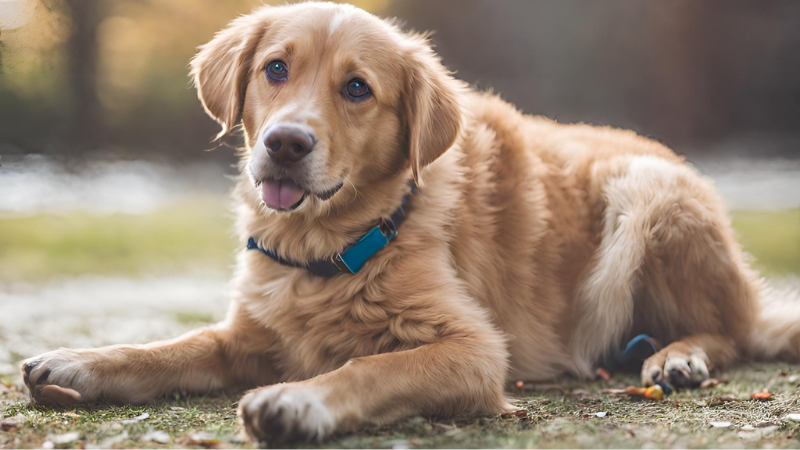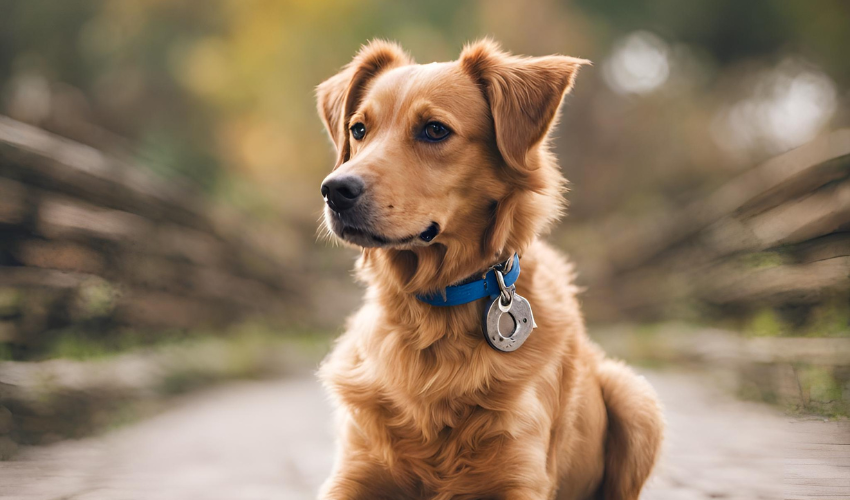Step into the world of man’s best friend and discover the hidden clues of a neurodevelopmental condition that often goes unnoticed. The behaviour of dogs can be as complex as our own, and understanding the signs of autism in dogs is a fascinating and important aspect of their well-being.
Overview of Canine Autism
Stepping into the paw prints of our furry friends, there’s a world rich with emotions and behaviours we’re just beginning to understand. Autism, a term you might’ve heard in human medicine, is not exclusively a human condition; it’s something that can affect dogs, too. This neurodevelopmental condition is still shrouded in quite a bit of mystery regarding our canine companions. Still, recent observations have sparked a conversation about whether dogs could experience a similar form of autism. Join us as we explore this intriguing subject and learn how to support dogs’ well-being better.
Understanding the nature of autism in dogs
Have you ever noticed a dog that seems slightly different from the rest? They may play differently or be super focused on one thing. Like humans, dogs can show signs that might make us think of autism. Though it’s not officially diagnosed in dogs as it is in people, some experts believe certain pups could experience a similar condition.
Now, the idea of autism in dogs is pretty new, and the vet community is still figuring it out. But it’s based on the thought that dogs can have neurodevelopmental issues, too. Their brains process stuff differently, which affects how they behave and interact with the world. Observing these unique behaviours gives us a peek into their inner lives and helps us understand our furry friends better.
Recognizing the Signs
Entering the realm of our canine friends’ minds, we notice certain patterns that hint at something more than quirky behaviour. Paying attention to these cues can be a window into the world of dogs, who might experience the world differently from their peers. Let’s look at the behaviours that suggest our pups operate on a unique wavelength.
Social communication difficulties
In exploring the social world of dogs, certain behaviours may stand out that hint at difficulties in social communication. Just like us, dogs have their ways of interacting with their companions, and when those methods are disrupted, it can be noticeable. For instance, a dog might not respond to its name despite having no issues with hearing, or it might appear less interested in playing with other dogs or people, which is a significant deviation from what’s expected.
These peculiar behaviours indicate that a dog may struggle with social cues. They often display an unusual approach to socialization, such as remaining passive or disengaged during play or avoiding eye contact, even with familiar individuals. Understanding these signs requires careful observation and a compassionate approach to fully grasp our canine friends’ challenges in their social world.

Repetitive Behaviors
Have they ever noticed a dog chasing its tail endlessly or insisting on following the same route on walks? These might be quirks, but they could also be signs that something deeper is happening. Dogs display a variety of habits that seem a little out of the ordinary, and some of these point to what we might think of as autistic-like behaviour.
For instance, some dogs might obsessively lick surfaces or themselves to the point of harm. Others may pace or walk in circles repetitively, almost as if following an invisible track. The intensity and frequency of these actions could signal an underlying issue, not just a moment of play or temporary curiosity. If these behaviours hinder daily activities or seem impossible for the dog to stop, it might be time for a trip to the vet.
Hypersensitivity
When we peek into the sensory world of dogs, we notice some are extra sensitive to stimuli like sounds, touch, or light. This heightened sensitivity can be compared to how certain fabrics feel scratchy to some people while others don’t mind them. Dogs with this sensitivity might react strongly to the everyday hustle and bustle that wouldn’t bother other pups. You might see them withdrawing from loud noises or shying away from physical contact.
In some cases, these furry friends could exhibit a notable dislike or fear towards specific textures or environments. They may only walk on grass or seem comfortable on shiny floors. Understanding that these reactions stem from their hypersensitivity is crucial. It helps us to tailor our surroundings to avoid unnecessary stress. Just imagine wearing an itchy sweater all day – that’s how overwhelming their world can sometimes feel.
Challenges of Diagnosis
Stepping into the intricate world of veterinary medicine, we encounter the enigmatic puzzle identifying neurodevelopmental conditions in our canine friends. This task is further complicated because dogs can’t tell us how they’re feeling, turning the act of diagnosis into a delicate process of observing and interpreting behaviour. Many characteristics suggest that autism-like traits are easily just quirks of a dog’s personality, making it crucial for owners and vets to distinguish between what’s part of a dog’s unique character and what might be signs of something more.
Distinguishing Autism-Like Traits from Natural Dog Behaviors
Peering into the world of our canine friends, it’s essential to pinpoint whether certain behaviours point to something more than quirky habits. Dogs exhibit various natural behaviours that sometimes resemble signs of a neurodevelopmental condition, often misleading even the most observant pet parents.
When separating what’s typical from what might be a sign of a deeper issue, it’s crucial to consider the context. For instance, a dog spinning in circles before lying down is normal, but if the spinning is excessive and seems compulsive, there might be more to it. Consistency and frequency are key: repeated patterns that disrupt a dog’s daily function or well-being could signal that it’s time to consult a vet or a canine behaviour specialist.
The role of breed and genetics
It’s intriguing to consider how a dog’s breed and genetic makeup can influence their behaviour and likelihood of showing traits similar to autism. Researchers have started to look into how genetics and breed-specific characteristics might play a part in these unique behaviours dogs exhibit.
Certain breeds display repetitive behaviours and social challenges more often than others, suggesting a genetic component may be at play. While it’s not to say that a specific dog breed is predisposed to canine autism-like symptoms, understanding the genetic links could help identify and support dogs with these behaviours better.
Support and Care
Embarking on the journey of nurturing a dog exhibiting atypical behaviour requires patience, attentiveness, and heart. It’s about creating a haven of comfort and predictability for your tail-wagging friends while gently guiding them through the world with understanding and specialized support. Whether it’s through crafting a stable routine or adapting training methods, every step you take is a leap towards a more fulfilling life for both you and your canine companion.
Creating a Safe and Structured Environment
Stepping into the paws of a dog who sees the world differently requires more thought regarding their living space. A safe and structured environment is like a cosy den where they can retreat without the stress of unpredictable chaos. It’s about creating a predictable routine and a calm atmosphere that helps these dogs feel secure.
To make this happen, stick to a daily schedule for feeding, playtime, and walks. Consistency is key; it helps reduce anxiety by making their world more understandable. Soft beds, quiet spaces away from loud noises, and familiar toys can make a significant difference. Each dog is unique, so paying attention to what makes your dog comfortable will guide you in setting up their perfect haven.
Training and Behavior Modification
Regarding our canine pals with unusual behavioural patterns, it’s crucial to approach training and behavioural tweaks with a gentle touch and lots of patience—picture training as a custom-made suit tailored to each dog’s needs and quirks. The focus should be on positive reinforcement, which rewards the behaviours we want to see more of. These rewards include treats, praises, or a good ol’ belly rub.
A structured routine can work wonders, especially for a dog overwhelmed by too much unpredictability. Like people, dogs can thrive on a comforting and clear-cut schedule. Gradual socialization is also key, introducing new experiences in a controlled and reassuring manner. This gentle nudging into the broader world can help reduce anxiety and build confidence in a pup who may struggle with social cues. With time, understanding, and consistent guidance, every dog can become the best version of themselves.
Compassionate Care and Acceptance
When it comes to supporting dogs that may be on the autism spectrum, compassionate care is key. It’s all about having patience and understanding their unique needs. The goal is to shower them with acceptance and create a loving environment where they can flourish without stress or pressure to conform to typical dog behaviour standards.
Providing compassionate care also involves observing and learning what makes your dog feel comfortable and safe. Every dog will have its quirks, just like people do, and recognizing these will go a long way. By affirming their habits and giving them the stability they crave, you tell them,” It’s okay to be you.” Embracing their differences rather than trying to ‘fix’ them truly makes a difference in their lives.
Conclusion
By unravelling the mysteries of canine autism and recognizing the signs, we can join paws in providing understanding and meaningful support for our beloved furry companions. While still an evolving field of study, the efforts to understand and embrace the unique needs of autistic dogs are integral to fostering a world where all dogs thrive.
FAQ
What does autism look like in dogs?
Autism in dogs is not well-defined, and the concept of autism in dogs is debated among experts. While some behaviors may resemble certain traits, clear diagnostic criteria for canine autism do not currently exist.
Exists autism in dogs vaccines?
No, there is no evidence to suggest that dogs can develop autism from vaccines. Canine vaccines are essential for preventing various diseases and are not linked to autism-like conditions in dogs.
Can dogs sense autism in humans?
Dogs have shown the ability to detect changes in behavior and scent associated with autism in humans, but more research is needed to fully understand this capability.








